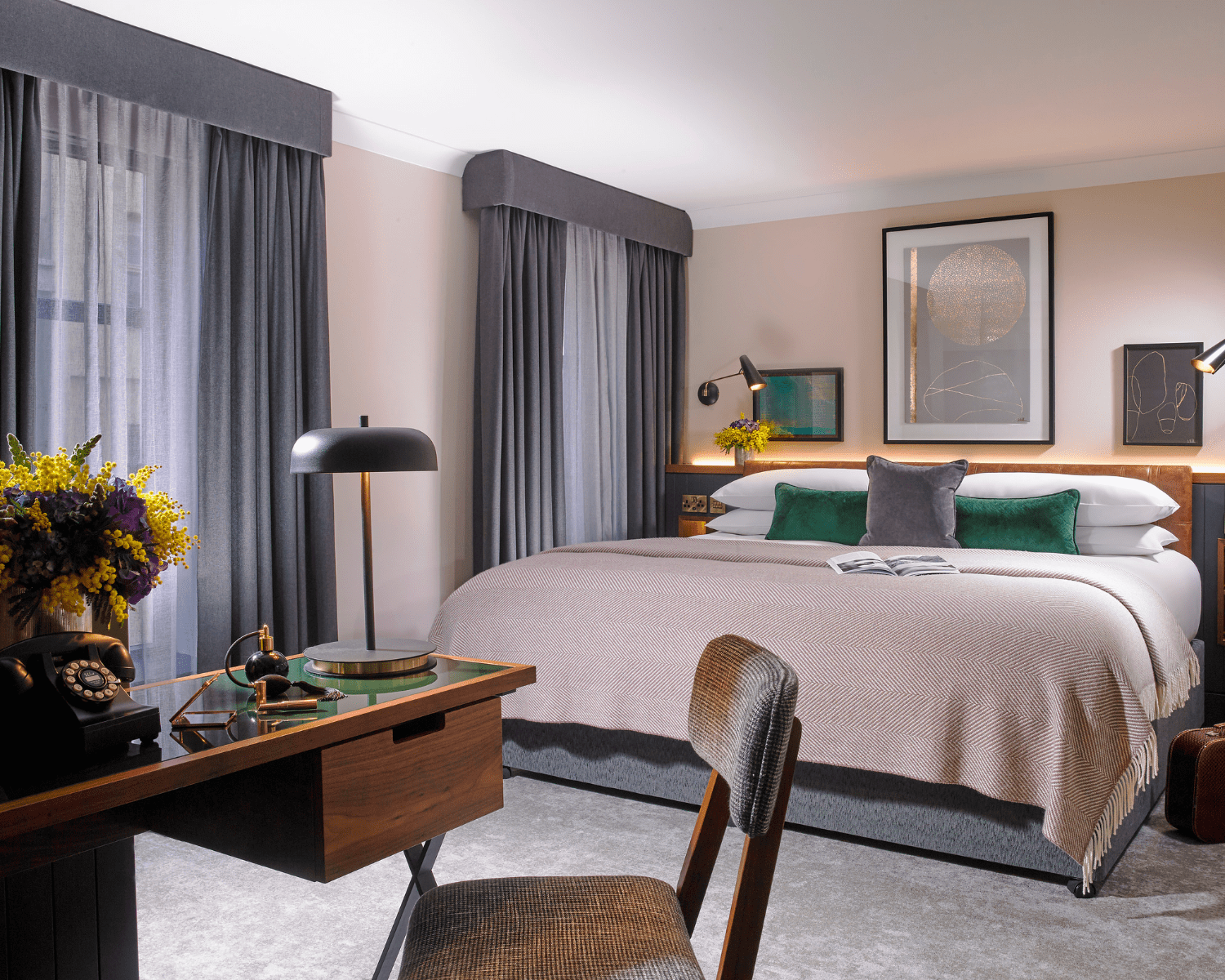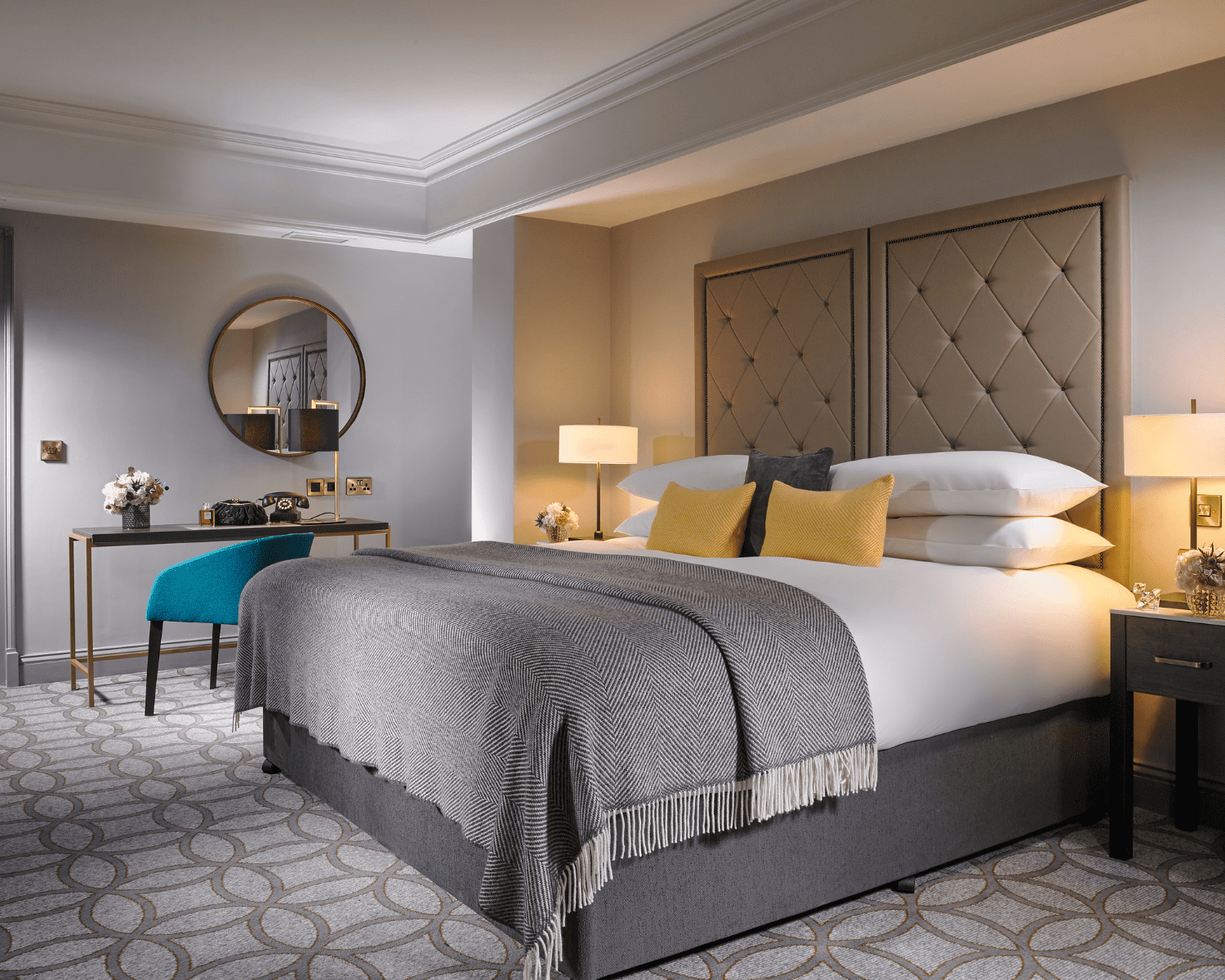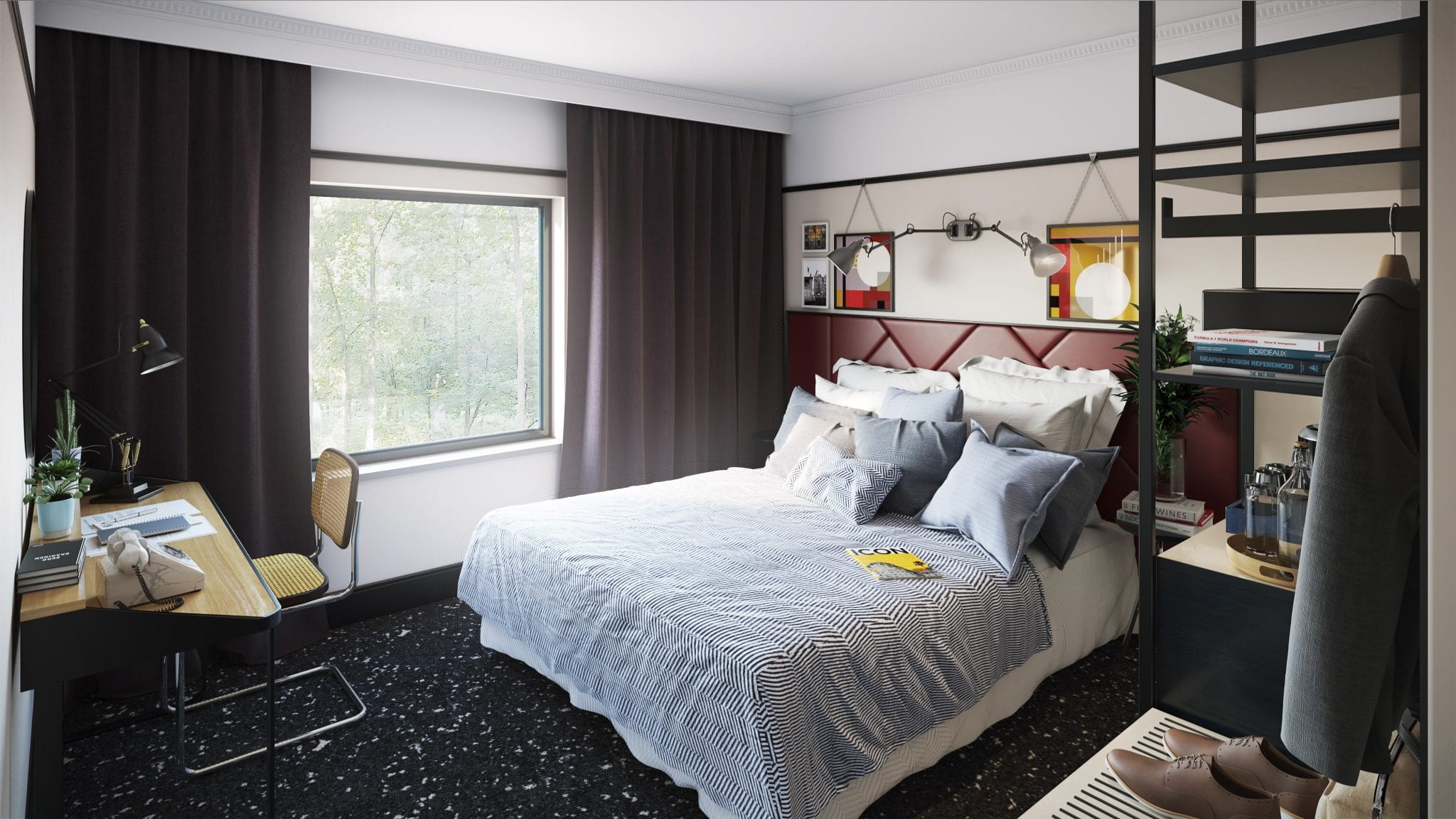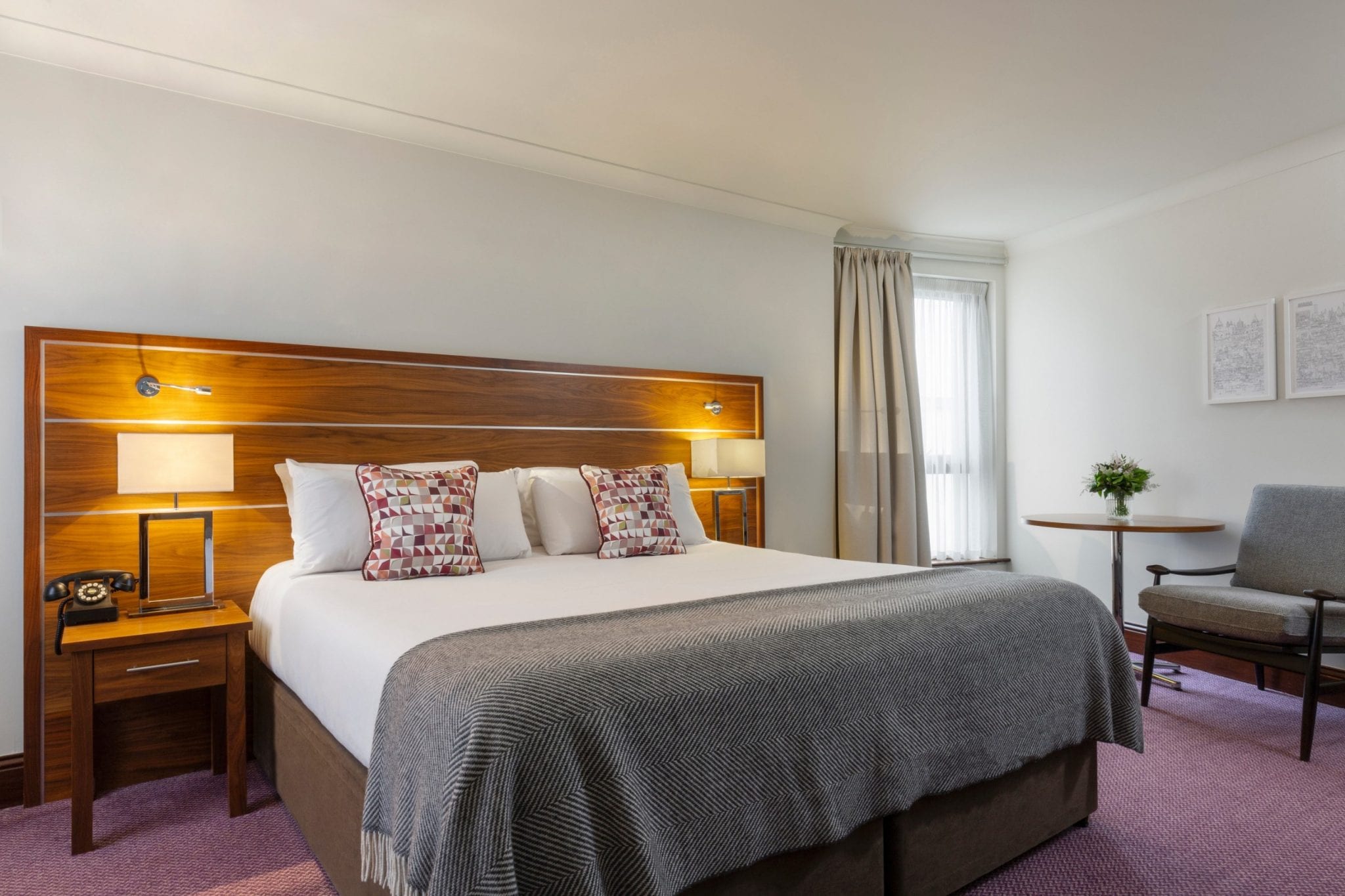History of Dublin Castle
The origins of the Dublin Castle date back to the 9th Century, where it began as a Viking fortress, before becoming an Anglo-Norman fort in the 12th Century—making the site over 1000 years old, pre-dating the 800-year-old castle building. Spanning across 11 acres (44,000 sq. ft.), the castle grounds were erected as a defence, on the most raised part of the city to keep watch for invasions.
As most of the castle’s medieval structure was destroyed during the Great Fire of 1684, much of the current architecture was rebuilt in palatial style during the Georgian era, transforming the building into a Georgian palace. One of the last remaining medieval structures is the large Record Tower, the most iconic part of the building from the outside.
While it may not look like there’s much to see at first glance, Dublin Castle’s fortress serves to protect a host of staterooms and some of the oldest furniture and artwork in the world. The heart of Irish history, Dublin Castle’s walls hold the ghosts of an Ireland far beyond which we know today.
What was Dublin Castle’s main function?
Dublin Castle’s main role in the history of Ireland was to serve as the seat for British rule for over 700 years, home to the representative of the British government. While the Irish people suffered turbulent many years under British rule, there was no suffering as great as the Irish Famine of 1845-1849—during which, the decisions made in Dublin Castle by the British government, led to the mass death and emigration of over two million. It was the most tragic disaster of its kind in 19th Century Europe and viewed by many as a deliberate act of genocide.
The castle also played an integral role in the Irish revolutionary period and the War of Independence, as the stronghold of British efforts against the persistent Irish republican cause, which heightened significantly after the famine. In 1922, after Ireland secured the freedom of 26 counties following the War of Independence, Dublin Castle was handed over to Michael Collins, symbolically serving as the location for future Irish presidential inaugurations.
A place marked by merciless colonial rule and the nerve centre behind Ireland’s most prevalent historical events, Dublin Castle holds enormous significance in Ireland’s turbulent history and its later fight for freedom.
Top sights to see at Dublin Castle
St. Patrick’s Hall
One of the grandest and most imposing rooms in the castle, St. Patrick’s Hall dates back to the mid-eighteenth century, where it served as the main palace ballroom. In 1869 it served to host meetings and introduction ceremonies for the Knights of St. Patrick, known as the Most Illustrious Order of Saint Patrick—the flags of which still hang in the hall today.
St. Patrick’s Hall is now the setting for the presidential inauguration, one of the most significant political occasions in Ireland.
Record Tower
Also known as the Medieval Tower, Gunner’s Tower or the Wardrobe Tower, this is the last remaining structure of the Norman castle built in 1204 before most of it was destroyed in the Great Fire of 1684.
Its walls are estimated to be around 4 metres thick, designed for maximum protection from invaders, as per King John’s mandate “We command you to erect a castle there, in such a competent place as you may consider to be suitable if need be for the defence of the city as well as to curb it, if occasion shall so require, making it as strong as you can with good fosses and strong walls.”
The tower was most likely used as a wardrobe to store the King’s armour and treasure, before becoming a safe for books, manuscripts and political correspondence.
Chapel Royal
The impressive Chapel Royal was opened in 1814 and stands as one of the most splendid Gothic revival structures in the country. Originally erected as the official Church of Ireland, it was renamed the Church of the Most Holy Trinity in 1943, with the first Catholic mass held in the building by the Catholic archbishop of Dublin.
Throne Room
Once the centre of royal ceremonies in Ireland, the throne room was where the British Monarch and Viceroys received guests to the palace. The throne which you see today was made in 1821 for King George IV’s visit to Ireland and has since been used by several monarchs upon their visits to Ireland.
Chester Beatty Library
Many people come to Dublin to visit the Trinity College Library, however, the Chester Beatty Library houses some of the world’s finest ancient books and manuscripts, collected by engineer and philanthropist, Sir Alfred Chester Beatty. Some of the most notable collections include carved jade books and ancient textiles from 17th century China, exquisite Indian artwork dating back to the 11th century and manuscripts from the original Gospel of Luke, dating back to mid-third century AD.
How long does it take to tour Dublin Castle?
Dublin Castle offers daily guided tours which last approximately one hour. Visitors can also choose to do a self-guided tour using brochures provided at the ticket desk, available in seventeen languages. The self-guided tour can take between 1-3 hours depending on your pace.
The tour will take you through the history of Dublin Castle, from its Viking origins to its role during over 700 years of British rule and eventually throughout the period of the Irish revolution.
Ticket prices for guided and self-guided tours vary, with self-guided tours being slightly less expensive. However, the guided tour is worth paying a little extra for if you want to get the best out of your trip, as you get access to more exclusive parts of the building while accompanied by a tour guide.
Advance booking for both guided and self-guided groups is required. See the list of tour prices below (2019 prices):
How Much Is The Dublin Castle Guided Tour?
Adult – €12
Senior (60+) – €10
Student – €10
Child – €6
Family (5 children max.) – €30
How Much Is The Dublin Castle Self Guided Tour?
Adult – €8
Senior – €6
Student – €6
Child – €4
Family – €20
Getting To Dublin Castle
Dublin Castle is located in the city centre, so there’s plenty of transport options available. Here are a few:
By Foot
From Clare Street near Trinity College, walk the length of College Green, past George’s Street on your left and onto Dame Street. Walk for approximately 5 minutes and City Hall will come into view on your left. Take a left onto Cork Hill, then another slight left for a few feet and follow the route around to the left until you get to the entrance of Dublin Castle.
By Bus
Take the 66 bus from Clare Street towards Maynooth and get off at Temple Bar, Wellington Quay. Dublin Castle is a 5-minute walk from here.
By Car
If you are planning on driving to Dublin Castle, we recommend that you park in the nearby Q-Park at Christchurch. It’s then just a short 4-minute walk on foot. On Werburgh Street, walk towards Castle Street and turn right at the end of the street. Walk for 2 minutes and turn right twice again and then take a slight left. You will then reach the entrance of the castle.



